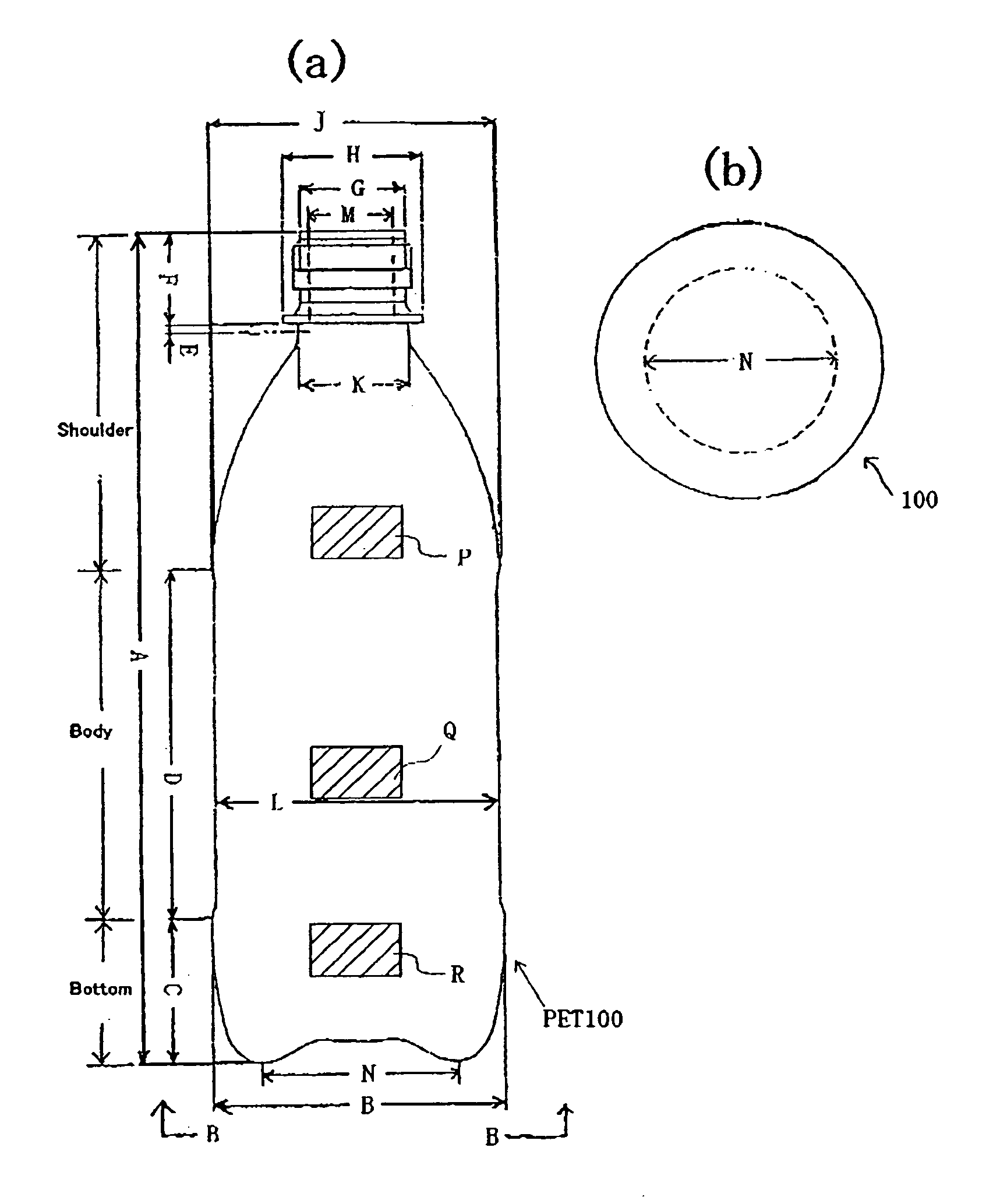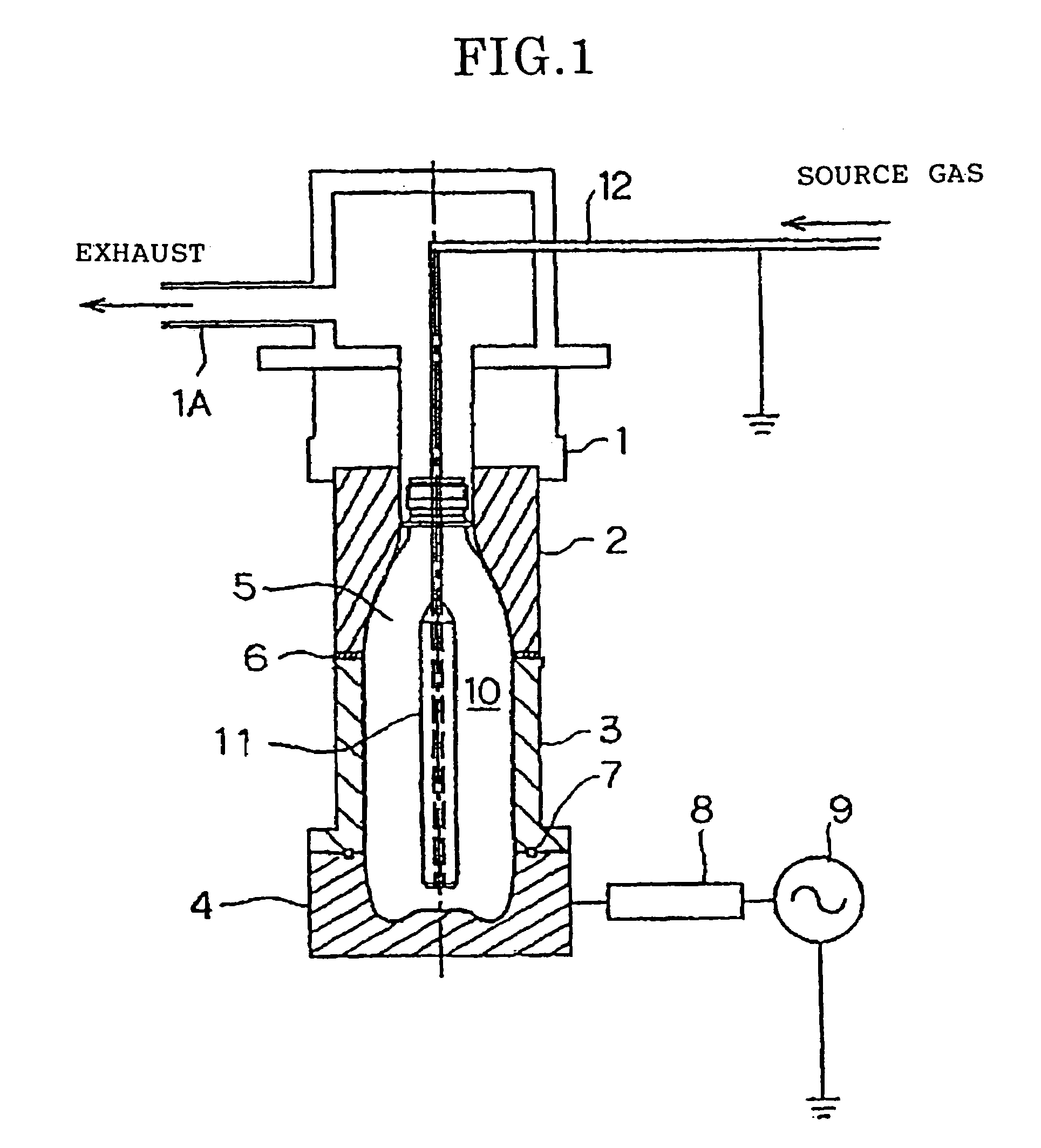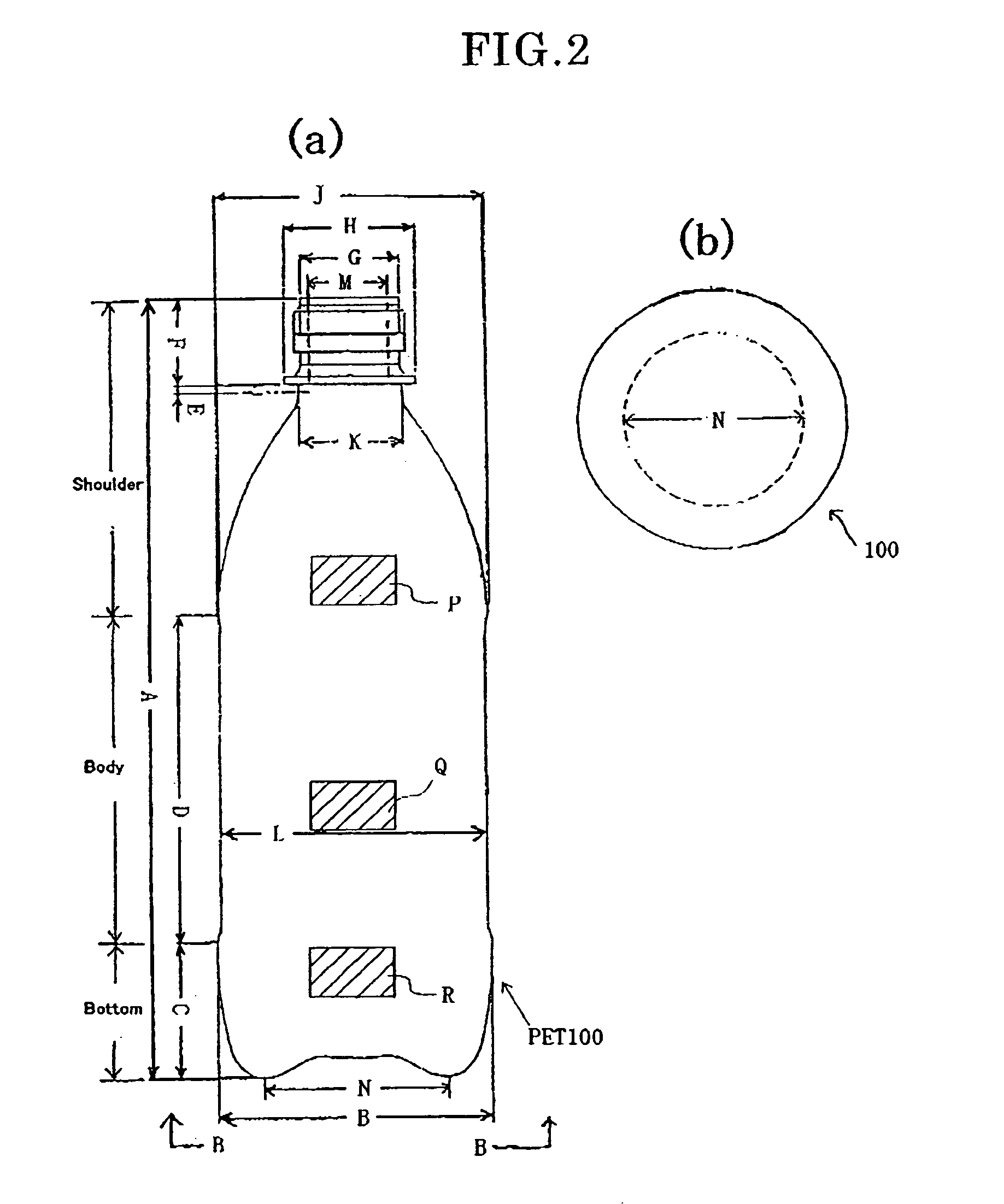DLC film, DLC-coated plastic container, and method and apparatus for manufacturing DLC-coated plastic container
a technology of dlc film and plastic containers, which is applied in the direction of coatings, chemical vapor deposition coatings, plasma techniques, etc., can solve the problems of unsuitable plastic containers for drinks, plastic containers are often limited in their application, and drink will go flat, so as to achieve the effect of reducing the oxygen transmission rate preventing the loss of transparency of containers, and improving the productivity of dlc film-coated plastic containers
- Summary
- Abstract
- Description
- Claims
- Application Information
AI Technical Summary
Benefits of technology
Problems solved by technology
Method used
Image
Examples
example 1
[0054]This is to demonstrate the formation of a DLC film on the inner surface of 500 ml PET (polyethylene terephthalate) bottles by the use of the apparatus mentioned above under different conditions mentioned below. The coated bottles were tested for their properties, and the data obtained are given below.
[0055]Table 1 shows the condition for plasma CVD employed herein, and the dimension and the shape of the PET bottles and others coated herein. Table 2 shows the methods for testing and evaluating the bottles of which the inner surface was coated with a DLC film. Table 3 shows the film-forming conditions for which toluene was used as the raw material gas, and the test data of the coated bottles. Table 4 shows the film-forming conditions for which acetylene was used as the raw material gas, and the test data of the coated bottles.
[0056]
TABLE 1ACondition for Plasma CVD(1)High-frequency Power: 500 to 1500 W.(2)Vacuum Degree: 0.01 to 0.07 Torr.(3)Gas Flow Rate: 1.7 to 31 cc / min.(4)Raw ...
example 2
[0065]This is to demonstrate the formation of a thinner DLC film on the inner surface of 500 ml PET (polyethylene terephthalate) bottles than in Example 1, under different film-forming conditions as in Table 5 below, for which is used the apparatus mentioned above. The coated bottles were tested and the test data obtained are given in Table 5.
[0066]In Example 2, the period for exposure to plasma is relatively shortened, and therefore the DLC film formed is thin.
[0067]
TABLE 5OxygenPeriod forFilmTransmissionExposure toThicknessRateTest No.Plasma (sec)(Å)(ml / day / bottle)1000.0332250–750.00834 90–1600.00746150–2300.004–0.00658200–3000.004610250–3800.003–0.004
[0068]The condition for exposure to plasma in Tests Nos. 1 to 6 is as follows: Acetylene was used as the raw material gas. For discharging, a high-frequency power was applied to only the bottom electrode 4. Precisely, the shoulder electrode 2, the body electrode 3 and the bottom electrode 4 were electrically insulated from each other...
example 3
[0075]A DLC film was formed on the inner surface of 500 ml PET bottles by the use of the apparatus mentioned above. The details of the film-forming condition employed herein are given in Table 6. The DLC film-coated bottles were tested and the test data are in Table 6. With reference to the data in Table 6, the coated bottles are discussed in point of the density of the DLC film.
[0076]
TABLE 6OxygenTransmissionDischargingHigh-FrequencyThicknessVolumeWeightDensityRateTest No.MethodPower AppliedPart of BottleÅ10−3 cm3mgg / cm3ml / day / bottle7whole 800 Wshoulder3180.3870.7271.88—body2130.3930.5781.47bottom2570.2490.3361.358whole1200 Wshoulder4320.5260.7371.40—body2320.4290.6271.46bottom2920.2830.3931.399bottom 800 Wshoulder2770.3770.7882.090.003body2190.4050.4931.22bottom2150.2090.3341.5910 bottom1200 Wshoulder3010.3670.8472.300.003body1970.3640.7302.01bottom3040.2950.4371.48
[0077]The condition for exposure to plasma in Tests Nos. 7 to 10 is as follows: Acetylene was used as the raw materia...
PUM
| Property | Measurement | Unit |
|---|---|---|
| density | aaaaa | aaaaa |
| density | aaaaa | aaaaa |
| frequency | aaaaa | aaaaa |
Abstract
Description
Claims
Application Information
 Login to View More
Login to View More - R&D
- Intellectual Property
- Life Sciences
- Materials
- Tech Scout
- Unparalleled Data Quality
- Higher Quality Content
- 60% Fewer Hallucinations
Browse by: Latest US Patents, China's latest patents, Technical Efficacy Thesaurus, Application Domain, Technology Topic, Popular Technical Reports.
© 2025 PatSnap. All rights reserved.Legal|Privacy policy|Modern Slavery Act Transparency Statement|Sitemap|About US| Contact US: help@patsnap.com



